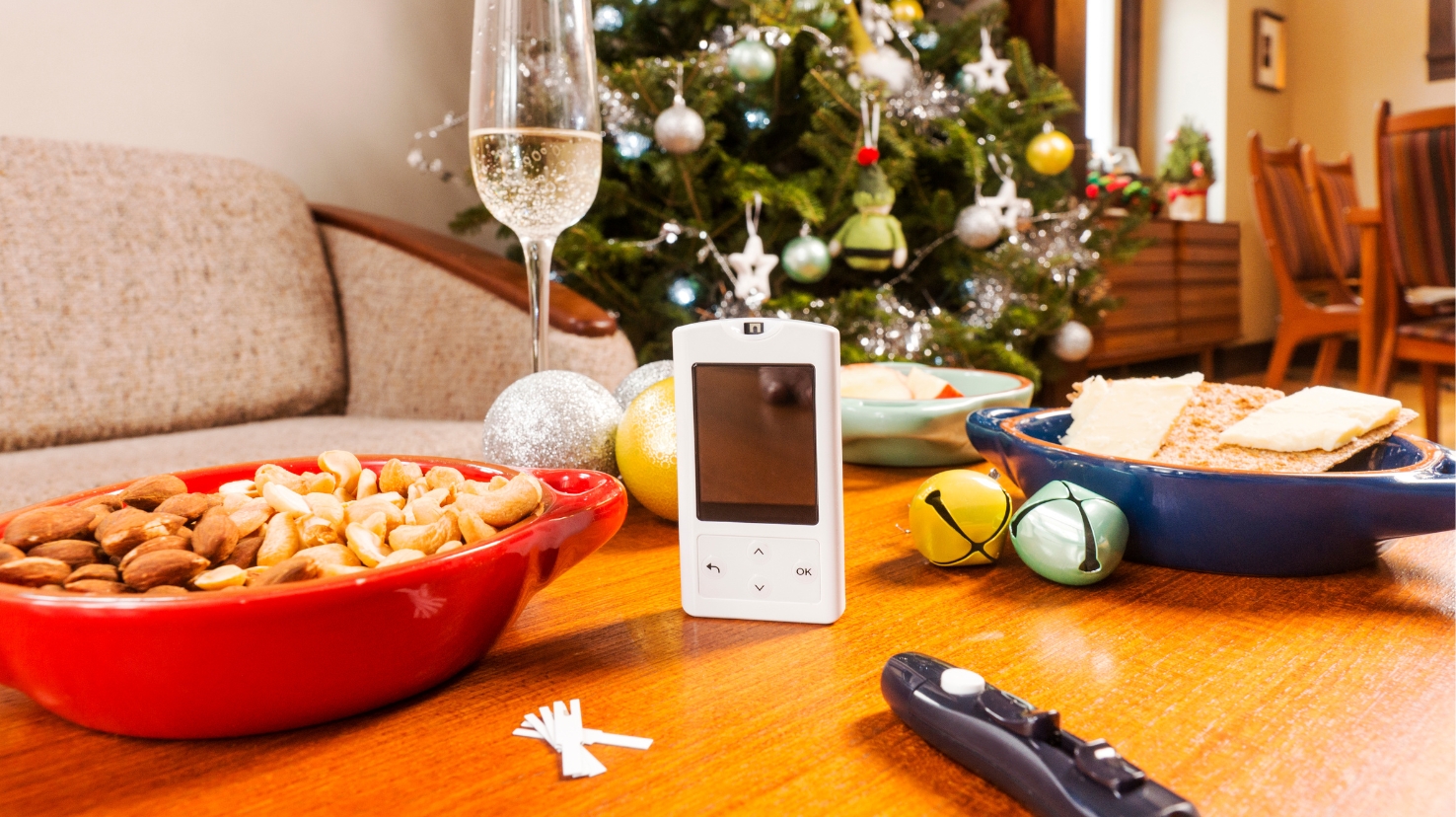
By Anne Hutchinson
Registered Dietician
November brings the start of the holiday season, often the first snowfall and Diabetes Awareness Month. For many folks with diabetes, the holiday season presents a host of challenges as it pertains to controlling blood sugar. After all, who wants to turn down grandma’s pumpkin pie or your sister-in-law’s sticky buns? While it may feel discouraging, there are several ways you can enjoy holiday gatherings and meals without feeling left out from all of the delicious treats. Here are some tips that may help ease your mind heading into the holiday season.
1. Continue to eat at consistent intervals throughout the day. While it seems like a good idea to skip breakfast and “save up” for your holiday meal, you actually need to make energy “deposits” throughout the day to keep fueled. This is especially important for people with diabetes who need to have a meal or snack every couple of hours to help maintain consistent blood sugar levels. If you are taking medication to control your blood sugar, skipping meals could result in low blood sugar levels. It’s a good idea to eat a breakfast containing high-quality protein and carbohydrates, such as plain Greek yogurt with a half cup of fruit, oatmeal with fruit and nuts or eggs with whole-grain toast.
2. Try to balance your plate. It is vital to fuel our bodies with a mixture of fat, protein and carbohydrates. Knowing which foods are rich in carbohydrates, especially refined carbohydrates, will help you make more informed decisions. Refined carbohydrates raise blood sugar levels more quickly.
It’s recommended to stay within a range of 45-60 grams of carbohydrates per meal. To help you reach that range without knowing the exact nutritional content of the food you’re eating, try the Plate Method:
• Fill half your plate with non-starchy vegetables like roasted carrots, salad greens or raw vegetables.
• Fill a quarter of your plate with starches, such as potatoes, squash, pasta or rice.
• Fill the remaining quarter with proteins. Keep in mind that there are many proteins and side dishes that also contain carbohydrates. Honey-baked ham or glazed carrots are two dishes that come to mind.
3. Skip sugary drinks. Beverages such as soda, punch and eggnog contain high amounts of sugar, which will also raise your blood glucose. To ensure you’re staying hydrated while also keeping blood sugar levels in mind, choose water, herbal tea, coffee or diet soft drinks. If you can’t pass up your aunt’s famous punch, limit it to 8 ounces or less. A serving often has 30 grams of carbohydrates or more.
4. Make movement a priority! Find fun ways to stay active with your family, whether that’s an impromptu dance party, a game of flag football or a group walk. Your muscles use glucose for fuel during exercise. Your body also becomes more sensitive to insulin, your muscle cells are better able to use any available insulin to take up glucose during and after activity.
Above all, remind yourself that you are only human. If you have a day where your blood sugar is out of range, try to think about what you can do differently the next day to change that.
If you would like to hear more from me about diabetes nutrition, I suggest you attend, Gifford Wellness presents: Diabetes. This event on Thursday, Dec 1 from 9 am-noon at Gifford’s Conference Center in Randolph, features several educational presentations from Gifford’s expert care team on a variety of topics related to type 1 and type 2 diabetes. RSVP for the event is encouraged. For questions or to RSVP, please get in touch with Katja Evans at (802) 728-2377.

